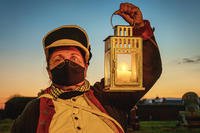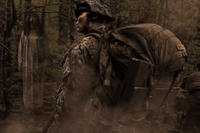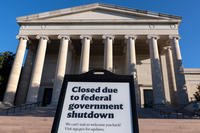For better and worse, the real story of American history can get complicated. For example, the post-Civil War era is as filled with grand stories of Union triumph as it is with the failures of Reconstruction.
Though grim and tumultuous, it is still part of our history. Acknowledging that truth was one artist's intent decades ago when creating a depiction of that history for the U.S. Military Academy at West Point. Now, her sculpture is the latest flashpoint in the effort to purge the U.S. military of Confederate symbols and honorifics.
A massive bronze artwork on the side of a West Point wall is a symbolic depiction of U.S. history, its pivotal moments and the people involved. But the centerpiece of the three-panel work includes a relief sculpture featuring the Ku Klux Klan.
The Naming Commission, a congressionally appointed panel of eight retired military officers and civilians charged with finding Confederate symbols in the U.S. military, has released part two of its final report. This report to Congress specifically lays out its findings at both West Point and the U.S. Naval Academy.
The commission said it found "few Confederacy-affiliated assets" at either academy. But the image of a hooded Klansman above the words "Ku Klux Klan" was specifically mentioned as a point of concern.
The bas-relief sculpture is mounted on a bronze triptych, a three-panel picture featuring a number of smaller sculptures, on the wall of the academy's Bartlett Hall. The entire artwork is 10'7" tall and 4'8" wide and was first dedicated in 1965 to those graduates who had served in World War II and Korea.

The sculpture may not fall directly under the Naming Commission's stated objective of finding Confederate symbols, but it is directly related to the Confederacy and its legacy.
According to West Point's Guide to the History Panels, artist Laura Gardin Fraser was commissioned to create the work, which she said was "based on real knowledge of American history and heritage" and depicts "historical incidents or persons."
The first panel covers events from Norse settlements through the American expansion west of the Appalachian Mountains. The second panel starts with the creation of the two-party political system through the joining of the Transcontinental Railroad in 1869. The last panel features images from the turn of the Industrial Age through the Atomic Age.
Each of the panels highlights important events during those time periods, along with the people associated with them. It is not, in the artist's words, "intended as a memorialization of these individuals, but rather as representative figures of their times."
The Ku Klux Klan relief is in the center panel's lower-left section, which is an area depicting "important personages of the period."
There have been three iterations of the Ku Klux Klan since the end of the Civil War, and the West Point relief is intended to represent the first, which was active between 1865 and 1870.
After the Civil War, six former Confederate officers created the KKK, which was made up of many Confederate veterans. Secretive bands of members formed throughout the south, acting as both insurgents against Union occupation and promoters of white supremacy. Former Confederate Gen. Nathan Bedford Forrest was elected the group's first "Grand Wizard."
Using threats, violence and terrorism, Klan members targeted newly freed slaves, politically active Black people and Northerners who moved into occupied areas for political or financial gain (called "carpetbaggers"), as well as white, southern Republicans and their allies (known as "scalawags").
This first iteration of the Ku Klux Klan sought the overthrow of the Republican governments in the newly reconstructed south and had to be put down by federal troops in some areas. It was declared a terrorist organization in 1870, but largely disappeared because Forrest called on its members to disband, believing it had strayed to an unpatriotic mission.
In its final report, the Naming Commission acknowledged that the sculpture does not technically fall under its purview, but did give the work a special mention. It recommended that the secretary of defense "address DoD assets that highlight the KKK in Defense Memorialization processes and create a standard disposition requirement for such assets."
-- Blake Stilwell can be reached at blake.stilwell@military.com. He can also be found on Twitter @blakestilwell or on Facebook.
Want to Learn More About Military Life?
Whether you're thinking of joining the military, looking for post-military careers or keeping up with military life and benefits, Military.com has you covered. Subscribe to Military.com to have military news, updates and resources delivered directly to your inbox.
















